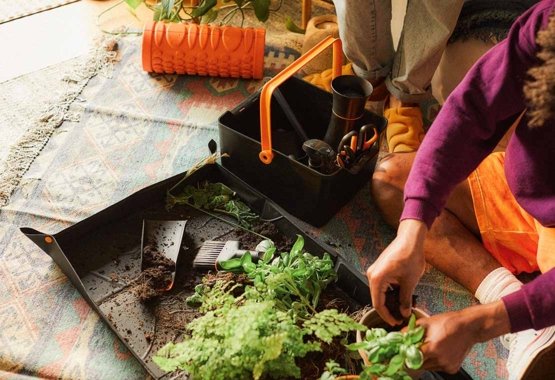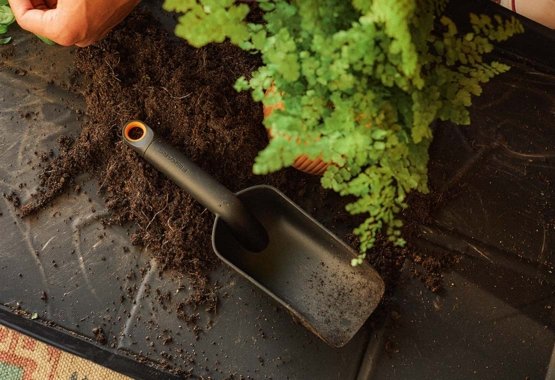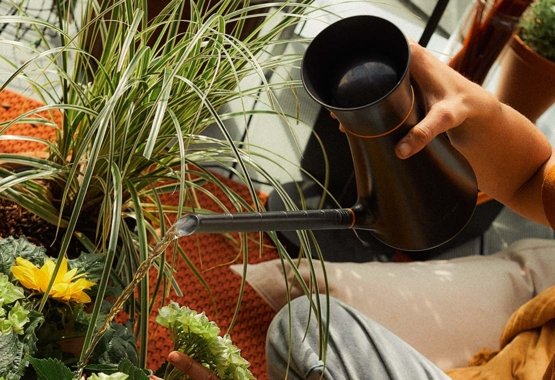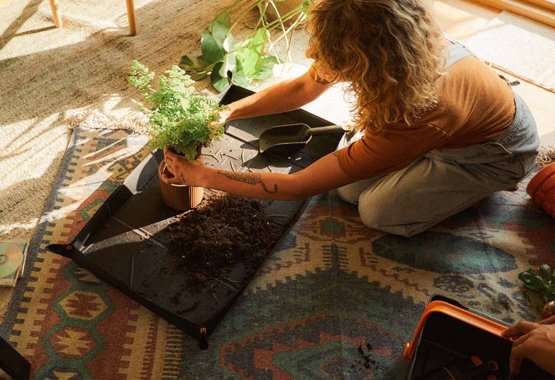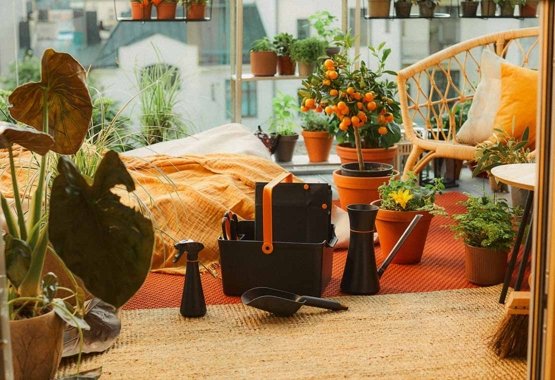
Repotting – how and when to do it
Repotting benefits plants by providing fresh soil rich in nutrients and improving water retention around the roots. Spring is the ideal time to repot, as plants enter a new growing season with energy for recovering the change.
Why to repot your plants
Newly purchased plants typically come in growing pots or simple, compact containers that are not meant as a permanent solution. Repotting new plants, houseplants that have outgrown their pot, and potted plants with old soil helps to give them a fresh start and space to mature. Cheer up your plants with fresh topsoil full of new nutrients, especially young houseplants that have lots of energy to grow. Mature plants can also benefit from repotting, but do not need it as often as younger plants.
How to repot your plants
- Pre-water the plant one day before repotting
A well-watered plant will better endure the soil change and any possible root damage by helping the soil stay in one piece when it is moved. - Prepare a new pot for planting
Preparation depends on the material of the new pot:- Unglazed clay: Sink into water a few hours before repotting so the clay won’t suck moisture from the soil.
- Pot without drainage holes: Add a 2–4 cm layer of small stones, or similar, to the bottom of the pot.
- Pots with drainage holes: Cover it with a filter cloth, coffee filter or piece of paper towel to avoid soil falling out.
- Add the first layer of soil
Add soil to the bottom of the new pot, and gently move the plant into the new pot. - Pack soil around new plant
Fill any empty space with new soil, patting soil to make it firm. - Water the plant
Generously water your newly repotted plant to give it a strong start.
Repot young houseplants every spring while they have the energy to grow
- If the plant is drooping due to heavy foliage or roots are showing from the bottom, it’s time for a new pot.
- Select a new pot that is about 1 cm larger in diameter.
- Especially beneficial for fast-growing trailing plants like inch plant, chain of hearts or begonias.
